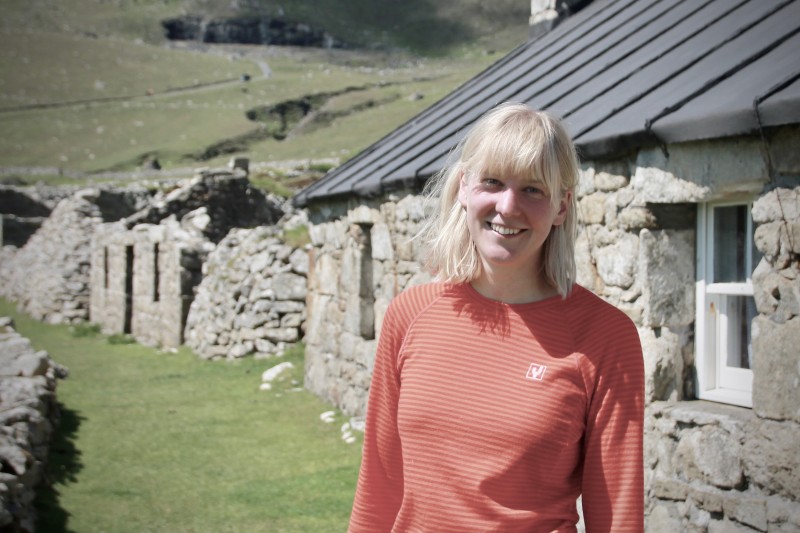Please note: We will continue to deliver your books and furniture until Thursday 18 December for schools, and Tuesday 23 December for public libraries. We will then close for the Christmas break, with deliveries resuming from Monday 5 January 2026. We wish all of our customers a very merry Christmas and a Happy New Year!
For help, advice and telephone ordering call our team on 0121 666 6646
Are you sure you wish to delete this basket?()
This action cannot be undone.
Sorry, something went wrong
Please report the problem here.
Kate Greenaway shortlist 2020: Q&A with Beth Waters

March 20th 2020
Q: Congratulations on your shortlisting for the Kate Greenaway Medal for Child of St. Kilda. What does it mean to you to be shortlisted?
Thank you! It absolutely means the world to me. This is the most prestigious award in illustration, and Child of St Kilda is my first book, so I feel a huge mix of gratitude and disbelief. The shortlist looks incredible and it’s an honour to be on it as such a newcomer. Most importantly though I’m just really happy because it shows that people young and old really do want to read about St Kilda, because it’s such an amazing place with an incredible history.
Q: Why do you think children’s book awards are so important, and particularly awards for illustration?
I think children’s book awards are vital for several reasons – firstly they get young readers talking about books! Reading them, visiting libraries and book shops. Secondly children’s books are just as important as ‘adult’ books, and can be just as diverse and interesting, as can their readers, and it’s important to recognise this. And lastly, illustrators in particular are by nature solitary creatures, and so awards get us up and out of our studios and talking to people, answering questions. This can feel awkward, but personally I love being able to put faces to my favourite books!
Q: Child of St. Kilda relays the way of life of the people on the remote Scottish archipelago of St Kilda before the final evacuation of the inhabitants in 1930. What first interested you about this particular moment and place in history, and what research did you need to do?
I first saw St Kilda on a trip to the outer Hebrides, when we climbed a hill on a clear day. I couldn’t believe people used to live there! I got really drawn in by the amazing old photographs of people on St Kilda, and I started off doing little sketches from these. Then I started to piece together the story of Norman John Gillies, which I soon discovered was really closely linked with the story of the evacuation. I read books and old newspaper articles, searched TV archives for anything featuring St Kilda. I got in touch with Norman John’s family, and his children John Bridget and Shirley welcomed me with open arms and shared their Dad’s wonderful story with me. Finally I travelled to St Kilda itself, which was incredible. The four hour violently bumpy boat ride was all worth it for three whole days drawing and talking to the immensely knowledgeable National Trust rangers on St Kilda. We camped in a tiny tent and my sketchbook got soaked! Once safely home again it was a case of bringing the story and the monoprint artworks together to bring the book to life.
Q: Your illustrations bring to life the stark contrast between the sea and wind swept landscape and the warmth and closeness of the community. What is the significance of the natural landscape throughout the story?
I’m fascinated by the idea that natural landscapes can play a role as vital as any character in many children’s books. Think for example of your classic fairy tale and the role played by the wild woods: the protagonist has to enter and become lost in order to overcome challenges and finally emerge changed. The woods represent adversity, confusion and sadness, but also the opportunity for change, beauty, discovery and growth. English Literature in particular is full of this kind of relationship between protagonist and wild environment. With St Kilda it was this same relationship between people and natural environment that got me interested. How did people survive here? They were simultaneously reliant on the wild and windswept landscape and at its mercy, and clearly their strong sense of community was key. Ultimately though I didn’t want to romanticise St Kilda – the setting is beautiful but life there would have been incredibly hard. Also there are no trees on St Kilda, and this suited me well because I can’t draw them at all.
Q: The focus on Norman John Gillies makes the story personal as well as historical – was this a deliberate decision?
Yes, definitely. I think taking this angle probably makes the book a lot more relatable for younger readers in particular. Because the setting is so extreme and unusual, it’s amazing to have a normal little boy at the centre of it. It also brings home the stark contrast between the way children lived on St Kilda and the way children live now. Children now have access to so much technology and entertainment. Life on St Kilda would have been very different.
Q: Are there any key messages that you’d like readers to take away from the book?
In the scary and uncertain times of the current COVID-19 crisis, it’s absolutely not lost on me that ‘Child of St Kilda’ is a book about extreme social isolation. But it’s also a book about a small tightly knit community who had survived against the odds for thousands of years by working together and taking care of their weakest members without question. Even the evacuation was not something that was forced on them, but a decision taken by all the islanders for the benefit of everyone. Their community spirit in times of hardship is something I’d really like readers to come away and remember.
Q: Can you tell us a bit more about your creative and artistic process, and how the writing and the illustrations interrelate in the book?
Ideas begin visually, usually by gathering reference material and sketching. For the final artworks I work in monoprint, where ink is rolled onto a plate and then rubbed away to create shapes and textures, or painted back on with a brush, and built up in layers. Each layer is transferred from the plate to the paper using an etching press, and the image will always be back to front. I love that this method takes away a lot of the control you otherwise have – mistakes are part of the process and can often turn out to be the best part of the image. The writing and the pictures should always be communicating different things, and in this book the writing gives you a lot of the information while the images hopefully convey something of the atmosphere of St Kilda.
Q: Who are your favourite writers and illustrators, and are there others who have influenced your work?
A huge influence for this book was William Grill’s ‘Shackleton’s Journey’ – it got me interested in narrative non-fiction, and the pencil illustrations are deceptively simple and perfect for the sparse Antarctic landscapes in the book. I also love mid century art and illustration in particular – John Minton, Alfred Wallace, Christopher Wood, Brian Wildsmith, Roger Duvoisin. But I love many other illustrators too – I grew up on Shirley Hughes and Quentin Blake and now I read my little boy books by Katherina Manolessou, Kaatje Vermeire, Jon Klassen and so many more.
The Child of St. Kilda is available now.




